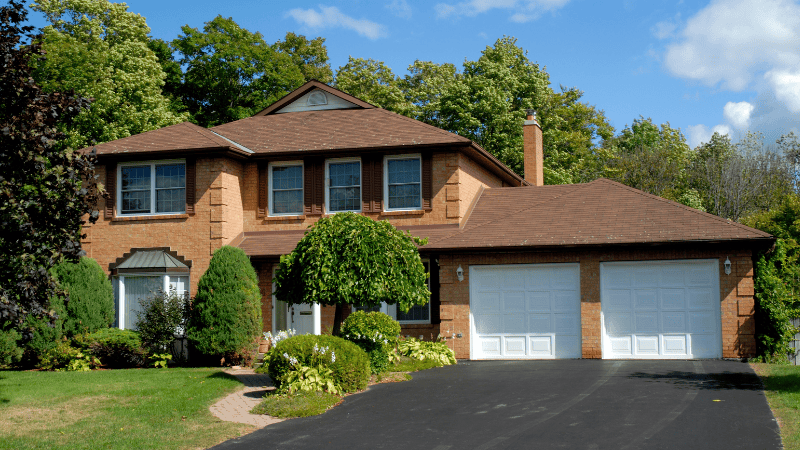Last updated: November 2025
Quick Answer
A home appraisal checklist for VA and FHA sellers in 2026 focuses on safety, structural soundness, and livability. VA and FHA appraisers both look for issues like roof damage, electrical hazards, peeling paint, and missing handrails. Preparing your home with these in mind helps prevent delays and failed appraisals.
Want to avoid costly delays? This article breaks down how to pass a VA appraisal by prepping your home to meet the most common safety and structural standards.
Quick Prep Summary: Top 5 fixes before your VA or FHA appraisal
Before your home appraisal, address these five issues to avoid delays:
- Repair roof damage: Replace missing shingles and ensure the roof has at least 2–3 years of life left.
- Correct safety hazards: Install missing handrails, fix broken steps, and remove any exposed wiring.
- Fix water damage and leaks: Dry out any visible stains or mold areas and repair plumbing leaks.
- Repaint peeling surfaces: Especially for homes built before 1978 (lead-based paint rules apply).
- Ensure all utilities work: Appraisers must test heating, electrical, and plumbing systems during the visit.
Pro tip: Have all repairs completed and utilities turned on before the appraiser arrives.
Let’s Build Your Path to Homeownership
At Salute Mortgage, we combine veteran-led guidance with clear, tactical support—whether you're buying your first home, refinancing, or planning for long-term equity.
Why the home appraisal matters when selling with a VA or FHA loan
Selling a home to a buyer using a VA or FHA loan means the appraisal is more than just a market value estimate. It also includes a property inspection that ensures the home meets specific safety and condition standards.
Appraisers working with VA and FHA loans must follow government-mandated guidelines. These checklists protect the buyer and lender, but they can also cause costly delays for sellers if the home doesn’t meet minimum standards.
What appraisers look for during a VA or FHA appraisal
Appraisers evaluate both the value and condition of the home. For VA and FHA loans, this includes a check against Minimum Property Requirements (MPRs).
Typical FHA seller repairs include fixing water damage, repainting peeling walls, and replacing nonworking light fixtures—all items that can delay closing if left unchecked.
Here’s what typically stands out to appraisers:
- Structural integrity: Foundation cracks, sagging floors, or signs of major damage raise red flags
- Roof condition: The roof must be free of leaks and have a reasonable life expectancy (typically at least 2–3 years)
- Electrical systems: Exposed wiring, outdated panels, and non-functioning outlets must be corrected
- Heating and cooling: Homes must have a functioning heating and cooling system. In some regions, cooling is also required
- Water damage and leaks: Mold, stains, and standing water can lead to an immediate appraisal issue
- Peeling or chipping paint: Especially in homes built before 1978, this can signal lead-based paint risks
- Handrails and stairs: Missing or loose railings must be replaced to meet safety codes
- Utilities: All utilities (gas, electric, water) must be operational during the inspection
- Exterior hazards: Broken steps, exposed nails, or unsecured pools are flagged quickly
This emphasis on safety and livability makes it essential for sellers to proactively prepare.
Differences between VA and FHA appraisals
While both appraisals serve similar functions, they follow different standards.
| Feature | VA Loan Appraisal | FHA Loan Appraisal |
|---|---|---|
| Overseen by | Department of Veterans Affairs (VA) | U.S. Department of Housing and Urban Development (HUD) |
| Focus | MPRs for veterans’ housing | MPRs for safe, livable housing |
| Appraiser’s report | Includes Notice of Value (NOV) | Includes appraisal and required repairs |
| Pest inspection | Often required, depending on location | Sometimes required |
| Buyer fees | Limits on fees charged to veteran buyers | Fewer fee restrictions |
| Property standards | Strict on condition and safety | Slightly more flexible on cosmetic issues |
For both types of loans, if the appraiser finds the home unsafe or in poor condition, they will require repairs before the loan can be finalized.
Home appraisal checklist for VA and FHA sellers in 2026
To help sellers navigate the process, here’s a home appraisal checklist tailored for 2026 standards. Use this VA safety checklist to catch and fix common issues before the appraiser visits:
Exterior of the home
- Repair roof damage and replace missing shingles
- Remove peeling paint and repaint as needed
- Fix broken or uneven steps and sidewalks
- Replace missing or loose handrails
- Secure fences and gates
- Clear out debris or unsafe objects from the yard
Interior of the home
- Patch drywall and repair large holes or cracks
- Eliminate signs of water damage or mold
- Ensure all light switches and outlets function properly
- Secure or replace any exposed wiring
- Install smoke detectors in required areas
- Check for functioning heating and cooling systems
- Verify all plumbing fixtures are leak-free
- Replace cracked or broken windows
Systems and utilities
- Ensure water heater and HVAC systems are operational
- Confirm the electrical panel is up to date and labeled
- Test water pressure in sinks and showers
- Confirm all toilets flush and sinks drain properly
- Make sure appliances (if included) are working
Environmental and safety checks
- Remove or encapsulate lead-based paint (if built before 1978)
- Install carbon monoxide detectors (if required by local code)
- Ensure attic and crawl spaces are accessible for inspection
- Confirm pest control treatment if infestation is found
Completing this checklist before the appraisal increases the likelihood of a smooth, successful home sale.
Common red flags that delay VA or FHA appraisals
Even minor issues can cause an appraisal to be marked “subject to repairs,” slowing the sale process. Watch out for these common problems:
- Roofs with less than two years of usable life remaining
- Active wood-destroying insect infestations
- Missing window screens or broken panes
- Unsecured decks or patios
- Non-functioning heating systems in the winter months
- Cracked sidewalks that create tripping hazards
- Detached garages or sheds in poor condition
Addressing these before the appraiser visits can reduce repair requests and avoid delayed closings.
How to prepare your home before the appraiser arrives
Sellers can take simple steps to reduce the chance of complications during the appraisal:
- Turn on all utilities
- Provide full access to all rooms, attic, and crawlspaces
- Leave a list of recent improvements or repairs
- Clean up both the interior and exterior
- Make minor repairs before the visit (light bulbs, door latches, etc.)
If you’re unsure which items matter most in your region, a real estate agent or loan officer familiar with VA and FHA guidelines can help you prioritize repairs that affect appraisal outcomes.
Why preparation pays off for VA and FHA sellers
Failing an appraisal doesn’t just cause delays; it can also lead to the loss of a buyer. VA and FHA loans have strict timelines, and if required repairs take too long or cost too much, buyers may walk away.
By using a detailed home appraisal checklist, you can:
- Increase your home’s appraised value
- Reduce the risk of last-minute repair requests
- Help the buyer close on time
- Avoid renegotiating contract terms
Appraisers aren’t there to nitpick—they’re making sure your home meets government-backed lending standards. Meeting those standards means your buyer can move forward with confidence.
Ready to sell your VA- or FHA-eligible home?
Understanding what appraisers look for—and addressing those areas before the visit—can save you time and stress. Use the checklist provided here to get started, or download a printable version to keep on hand.
Download the checklist or talk to a loan officer about what appraisers look for in your area.
FAQ: Home appraisal checklist for VA and FHA sellers
A: Repairs tied to safety, structure, or health are required. These often include fixing roof leaks, replacing broken windows, repainting peeling surfaces, and correcting exposed wiring.
A: Yes, VA appraisals often include a pest inspection, especially in areas with known termite activity. Active infestations must be treated before closing.
A: No, outdated appliances won’t cause failure, but non-functioning appliances included in the sale may require repair or replacement for loan approval.
A: The inspection usually takes 1–2 hours, and the full report is delivered in 5–10 business days. Delays can occur if repairs are required.
A: The buyer may need to renegotiate, bring cash to cover the difference, or walk away. Pricing your home realistically can help avoid this issue.



